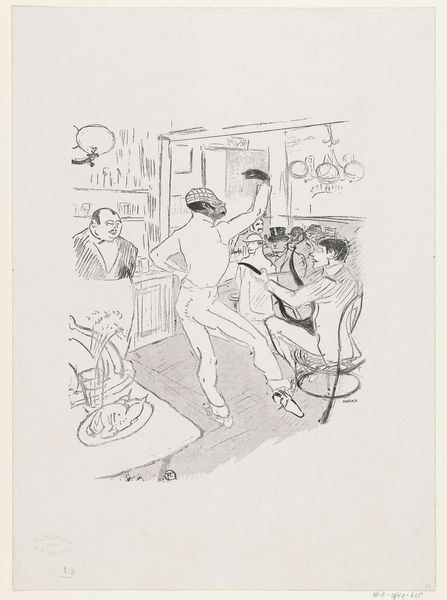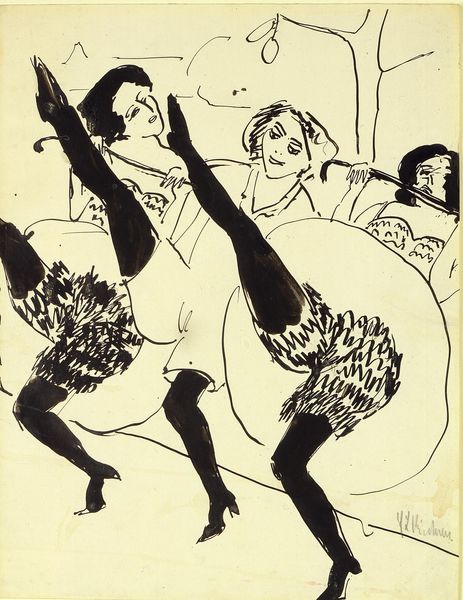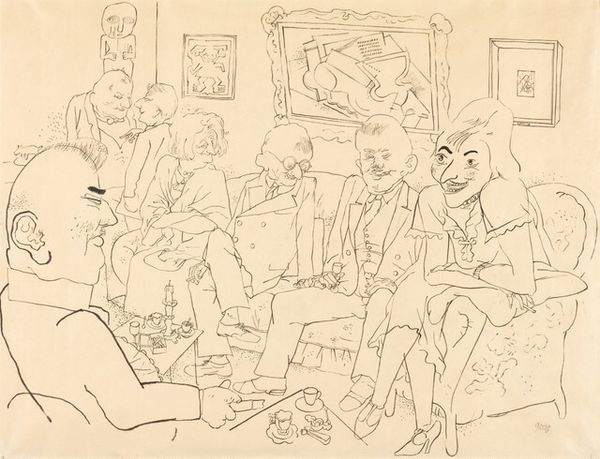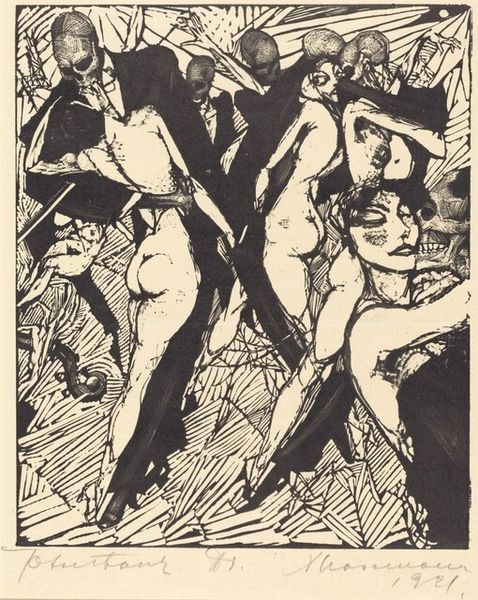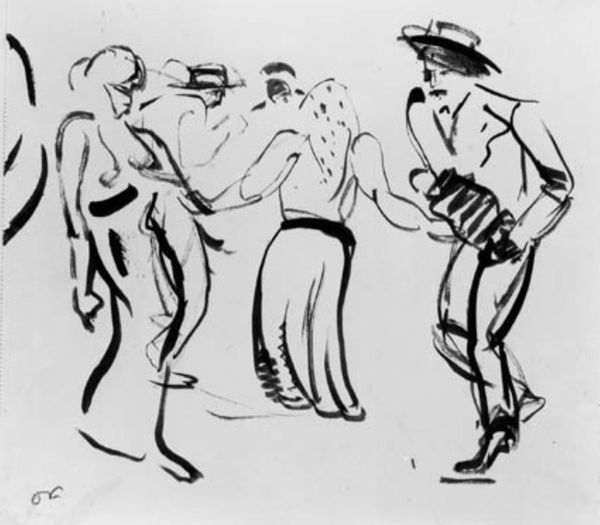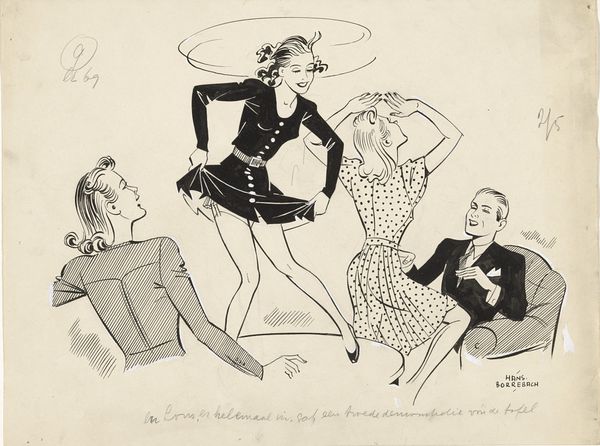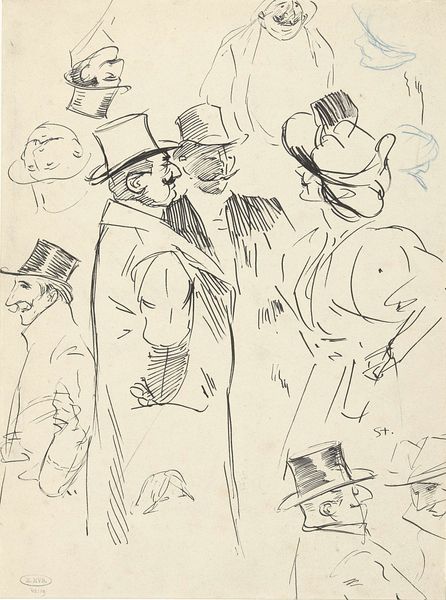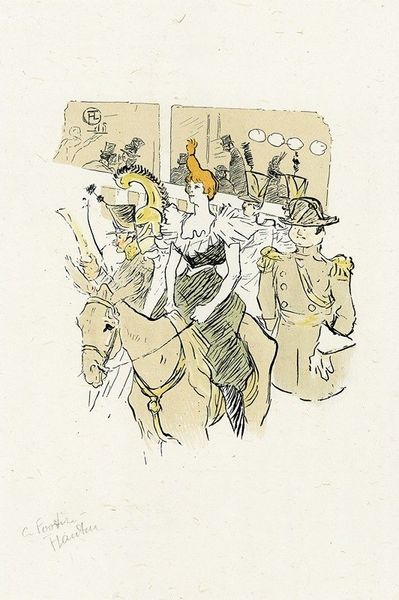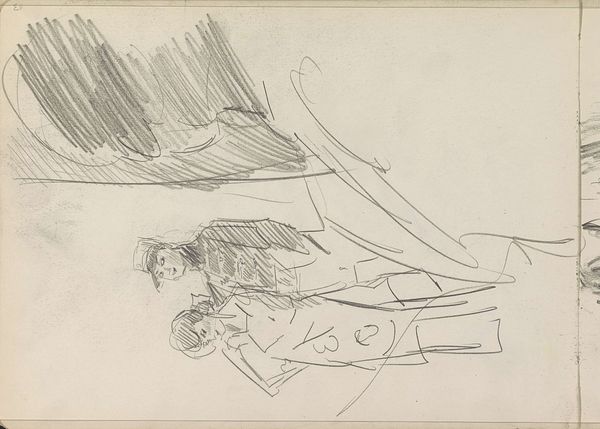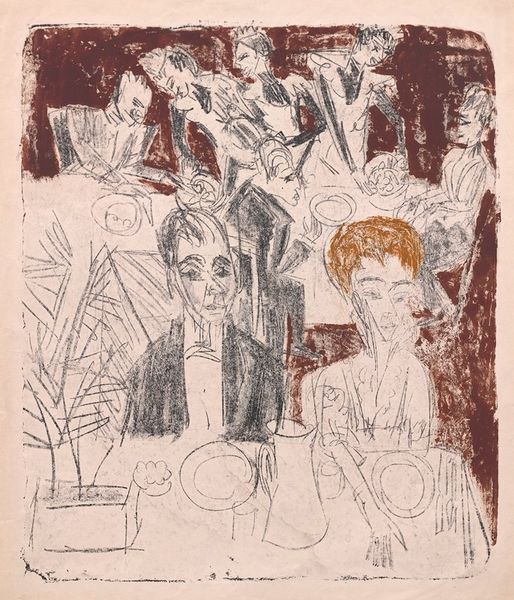
drawing, ink
#
portrait
#
drawing
#
narrative-art
#
german-expressionism
#
figuration
#
ink
#
expressionism
#
cityscape
#
erotic-art
Copyright: Public Domain: Artvee
Curator: Here we have Ernst Ludwig Kirchner's "Maskenball," an ink drawing from 1911. Editor: My initial reaction is a sense of uneasy exuberance. There's a starkness to the lines, a frenetic energy in the figures, even a kind of claustrophobia. It feels as if the joy is strained, maybe even forced. Curator: Kirchner's expressionist style is evident here in the distorted forms, exaggerated features, and bold, angular lines. These elements serve a deeper symbolic purpose. Think about the mask itself as a symbol. It allows for freedom but also concealment. Do you think Kirchner used these motifs to critique societal structures and social behaviors? Editor: Absolutely. I see it as a snapshot of Weimar-era Berlin. There's this feeling of hedonism, of breaking free from convention, but with a darkness lurking underneath. It speaks to the rise of industrial capitalism and burgeoning social alienation. Curator: Indeed. The mask suggests a rejection of authentic self-expression, of truth and vulnerability. There's this sense of superficiality pervading the scene, right? Do you notice how these harsh lines around the figure are a recurring theme? Editor: Yes, and those jagged lines definitely underscore the feeling of disconnection. I wonder, too, about the gaze—or lack thereof. The figures in masks seem turned inward, blind to the world and to each other. And isn't it possible this reflects a certain gendered performance, of masquerading to adhere to societal demands? Curator: Exactly, gender performance certainly seems important. To me, those masks are reminiscent of ancient theatrical masks or primitive ritualistic designs, giving the scene a primal undercurrent that plays off the modern urban setting. Do you suppose Kirchner wants us to ask if the march of progress means stripping away those ties that once connected humanity? Editor: It is powerful imagery for social commentary. The visual shorthand here effectively questions authenticity. We have to remember that he produced this just before World War One. There is already social turmoil that seeps into all this merrymaking. It anticipates great upheaval, doesn't it? Curator: It truly does. Looking at this now, it is amazing how artists can intuit change coming. I suppose that is their role as a societal bellwether. Editor: Ultimately, it leaves you with so much to ponder about culture, the body, and representation at this historical juncture. It is amazing what layers we unpack by viewing artworks from their social location.
Comments
No comments
Be the first to comment and join the conversation on the ultimate creative platform.
